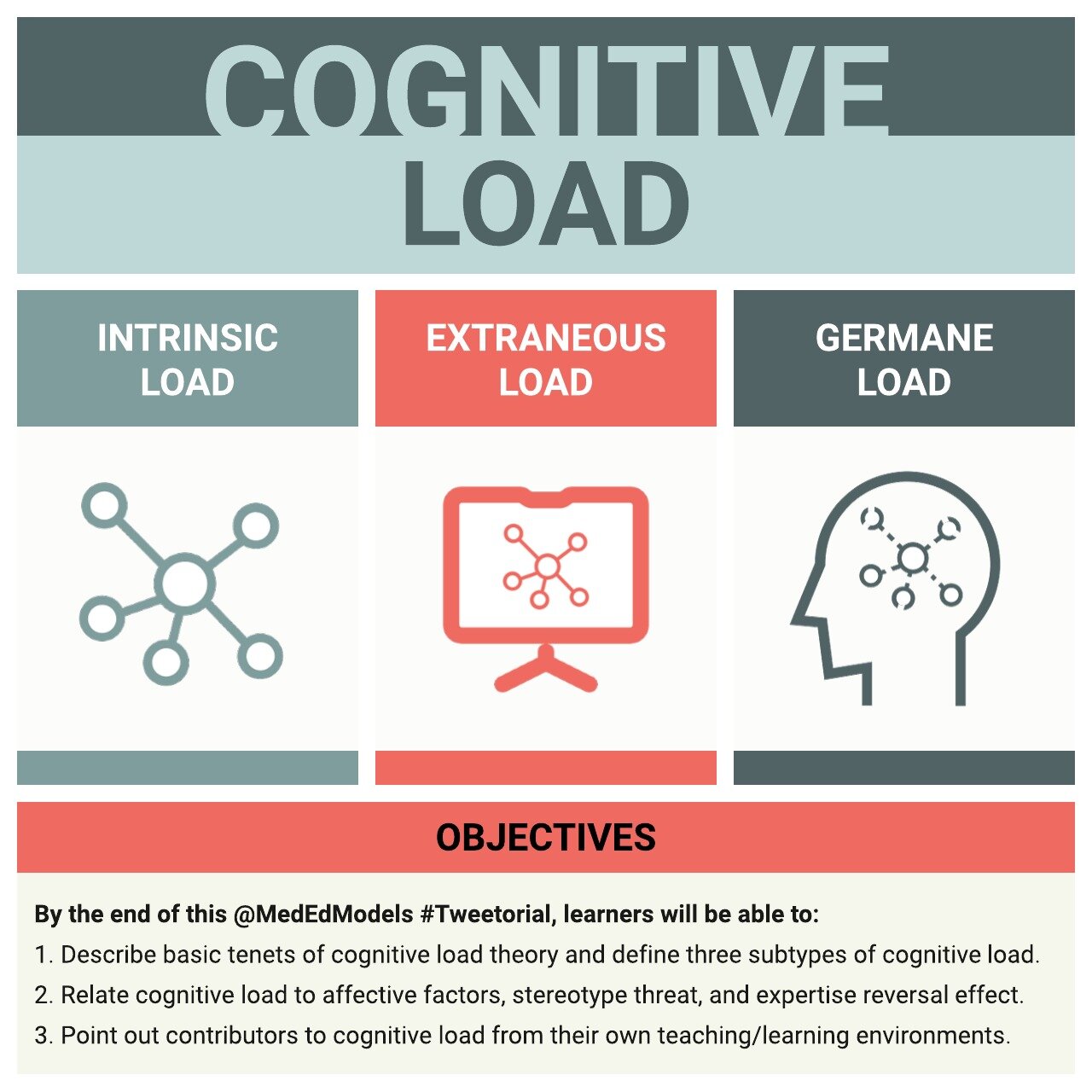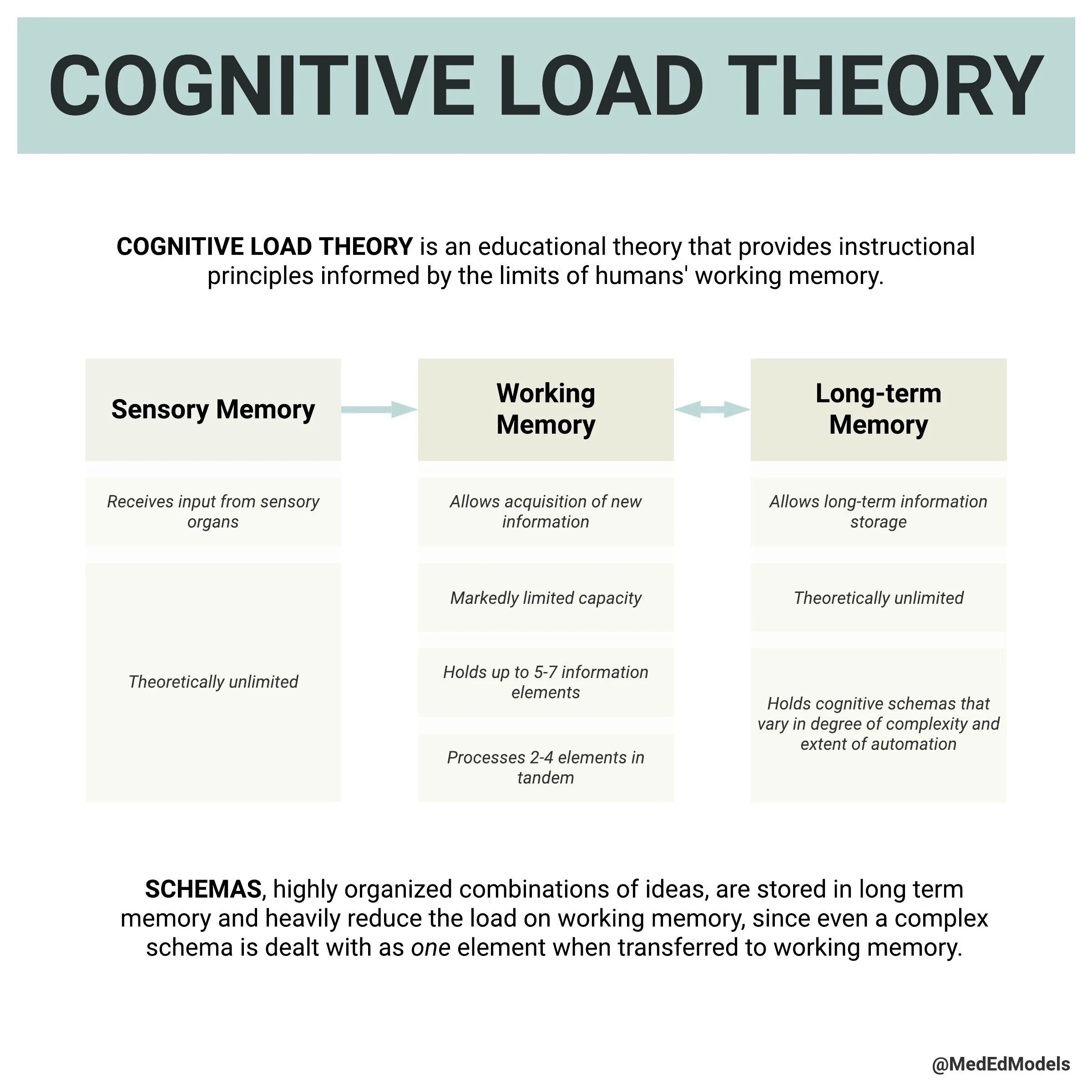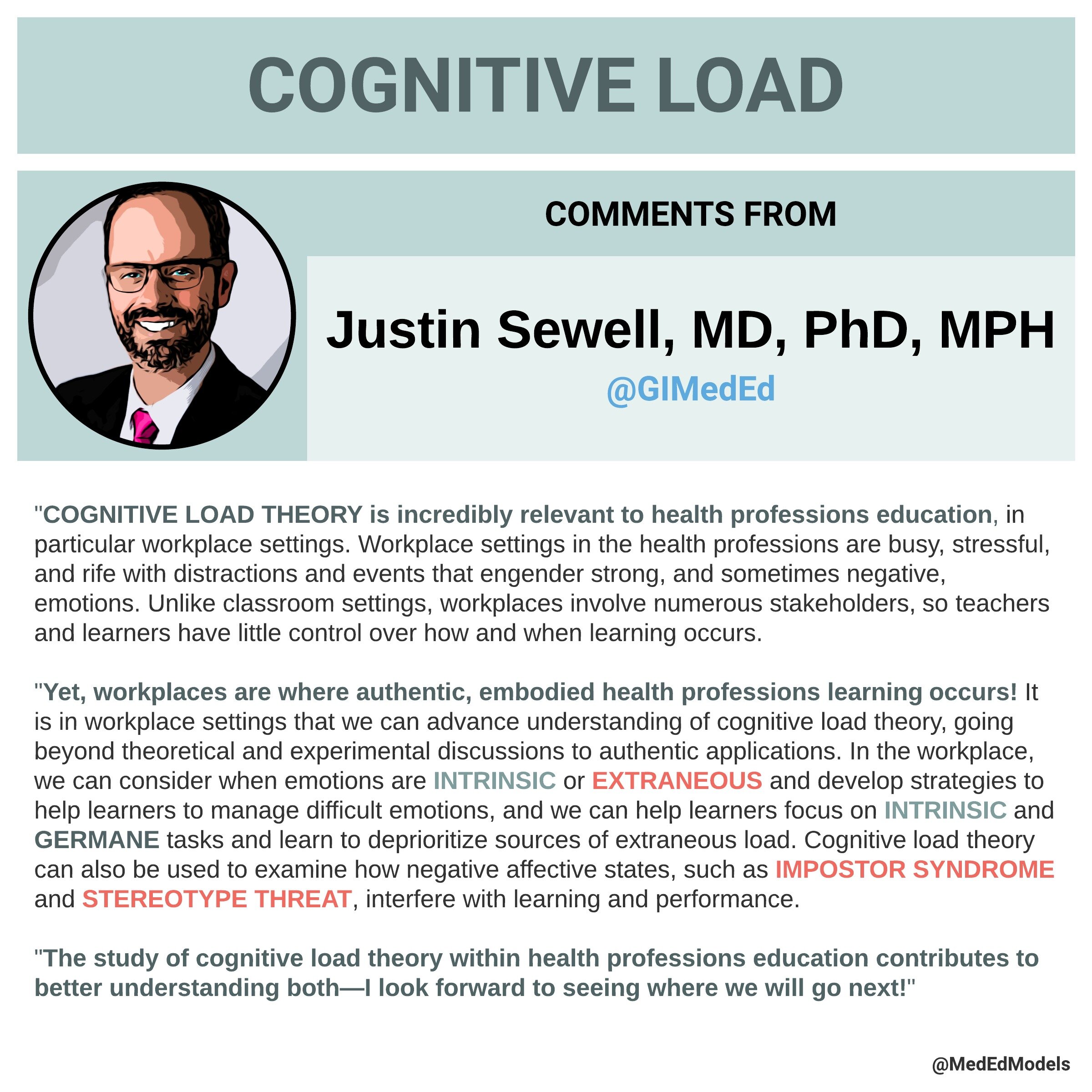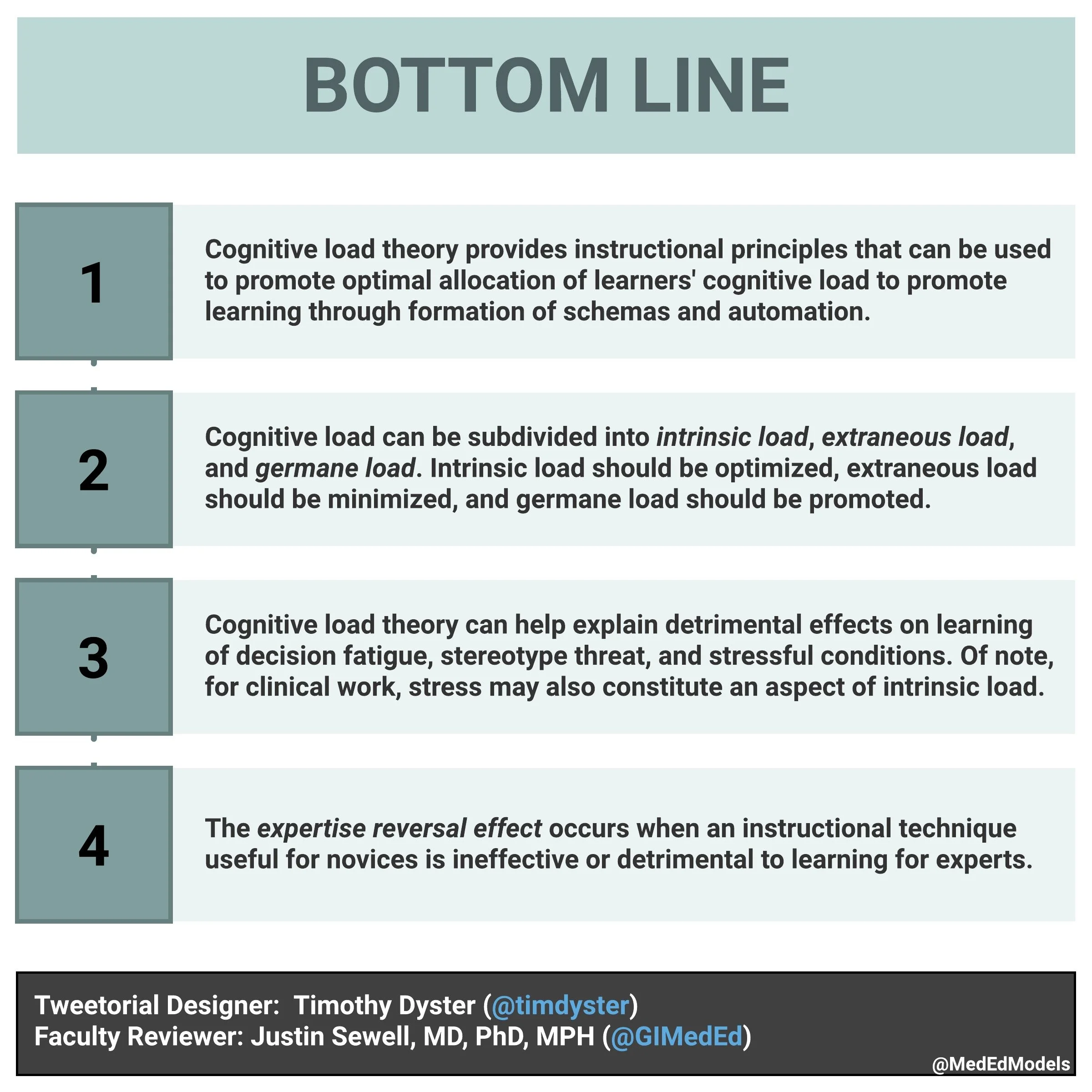Cognitive Load Theory
This MedEd Model covers Cognitive Load Theory with assistance from @GIMedEd
We will describe cognitive load theory (CLT), define its three subtypes, and relate CLT to ideas like stereotype threat & decision fatigue.
We’ll wrap up with a discussion of teaching strategies that can help you optimize cognitive load for your learners.
Let’s start with a discussion of how memory works. There’s three components to memory: sensory memory, working memory, and long term memory. Longterm memory is limitless, but working memory is not.
Schemas help overcome the limits of working memory.
How the limited working memory is used up is described by #CLT in three buckets:
Intrinsic load
Extraneous load
Germane load
Intrinsic load refers to the load that occurs as learners complete components of a learning task, which is impacted by task complexity and learner knowledge.
Extraneous load describes anything that misdirects attention and mental effort — very relevant to settings in medicine.
Germane load is a learner's use of cognitive energy to generate, refine, and automate schemas, which promotes learning.
In the face of cognitive overload, learning is impaired.
CLT helps educators think about how to optimize cognitive load for students.
When learners have pre-existing schemas, additional scaffolding by an educator can become redundant and use up precious cognitive load.
CLT accounts for and explains this effect, called “expertise reversal,” and suggests different educational techniques be used based on learners’ levels.
Cognitive load helps explain the impact on learning of other phenomena. For example,
and
’s study in
(bit.ly/2PXE4pH) examined how #StereotypeThreat affects learning through the lens of CLT.
What about affective factors? Affective factors can be intrinsic or extrinsic to a task, depending on their source & whether a task is inherently stressful.
Clinical environments are rife with distractions that also contribute to extraneous load.
Which raises the question: should we prepare our trainees for these kinds of environments, or could we change the environment itself?
This question remains open and controversial.
Here’s the take homes.
Let’s set you up To Learn More (#2LM).
Check out the work of these incredible scholars:
Particularly in:













